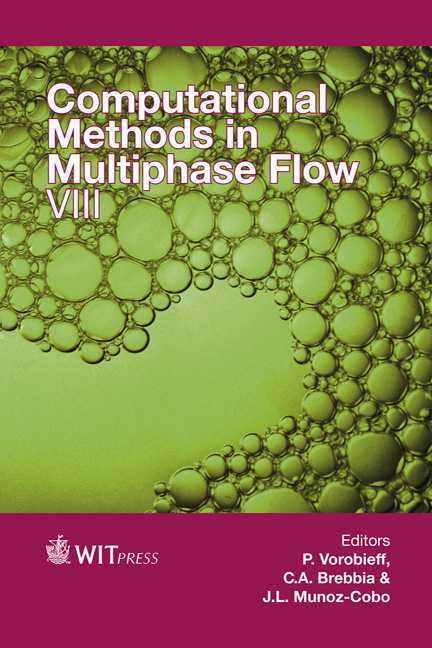Physical Modeling Of Turbulent Multiphase Flow In A Continuous Casting Steel Mold
Price
Free (open access)
Transaction
Volume
89
Pages
12
Page Range
439 - 450
Published
2015
Size
698 kb
Paper DOI
10.2495/MPF150371
Copyright
WIT Press
Author(s)
L. D. O. Campos, P. Gardin, S. Vincent, J. P. Caltagirone
Abstract
To understand the turbulent flow and mass transfer occurring inside a continuous casting (CC) mold machine, a multiphase CFD model is currently under development. This model will be used in subsequent studies to calculate the mass transfer coefficients of different species across the interface between liquid steel and slag. Those coefficients are necessary to predict slag composition and viscosity during the casting of steels. To validate the CFD model, some investigations to measure the velocity field in the region close to the interface, where the mass transfer between liquid steel and slag takes place, were carried out. Three fluids were considered, respecting main similarity criteria but not all: water to simulate the liquid steel, silicon oil to simulate the melted flux powder and air in the atmosphere domain. The velocity field was obtained by means of a Laser Doppler Anemometry (LDA) technique in the CC water model. Some parameters were evaluated regarding their effects on the interface behavior. Two different kinematic viscosities of oil were tested: 20 and 350 cSt. To evaluate the effect of water flow rate, it was set two flow rates: 1.6 and 2.0 m³/h. Oil layer thickness was either 4 mm or 15 mm. It was observed that slag viscosity has a strong effect on the flow near the interface: with the most viscous oil, the interface tangential velocity gradient in water was increased. The increase of shear stresses with the water flow rate was also quantified, which is important to better assess the possibility of slag entrainment during the casting.
Keywords
mass transfer, continuous casting, interface velocity





